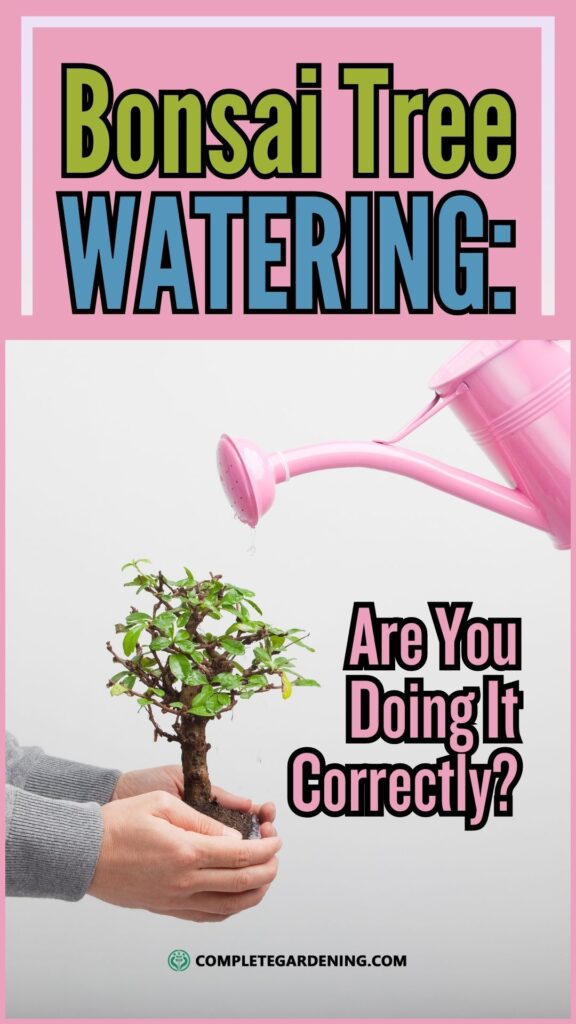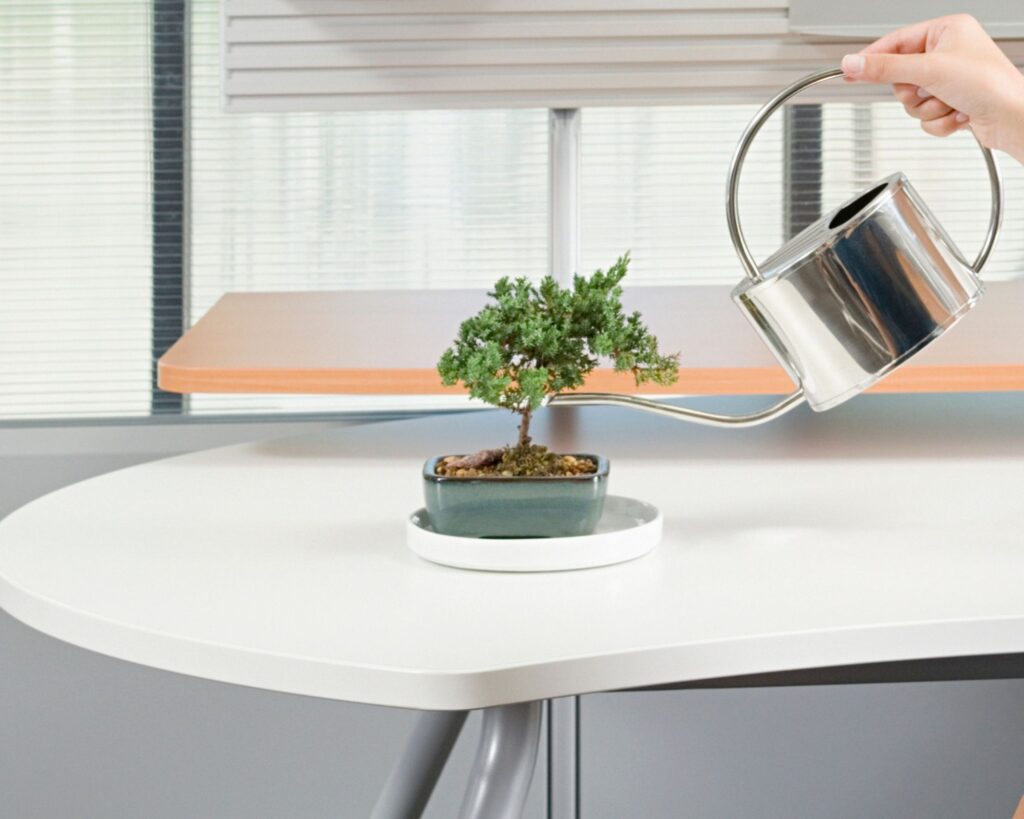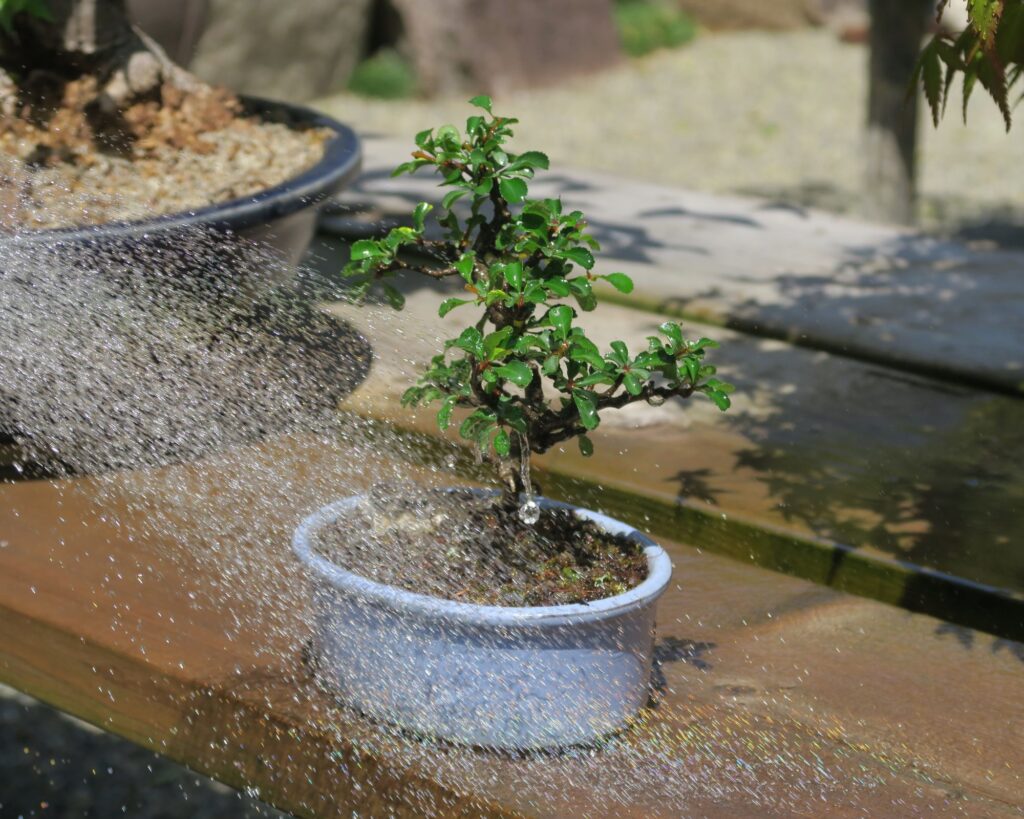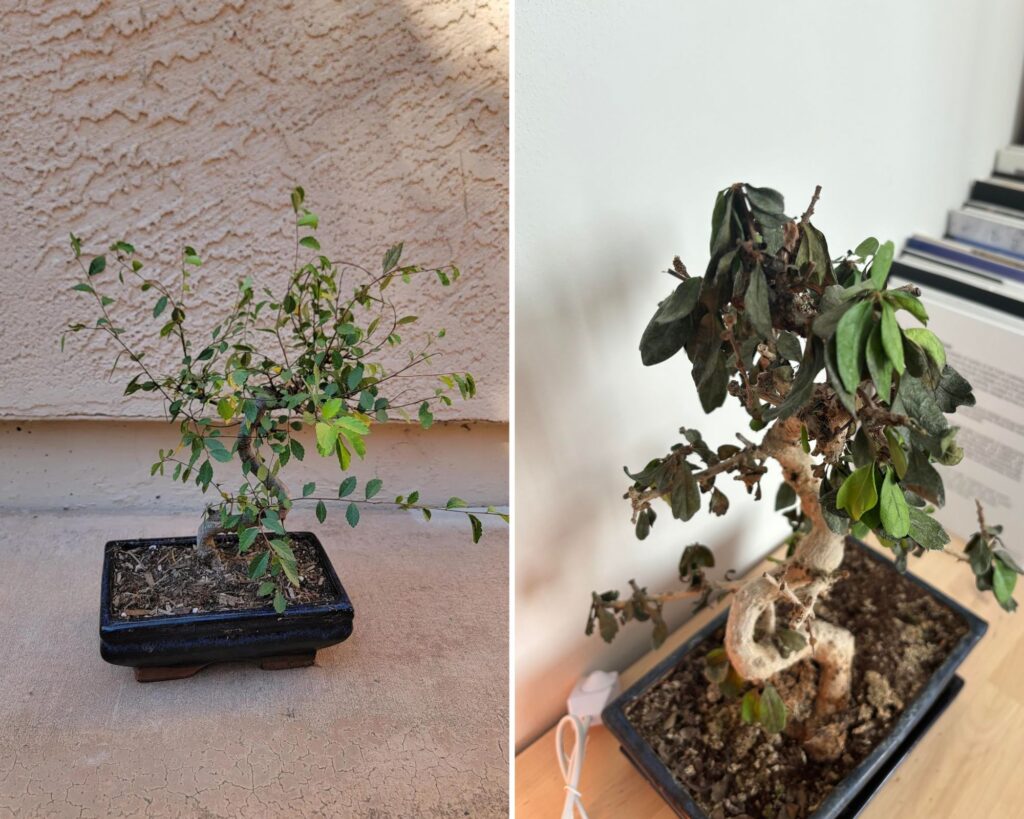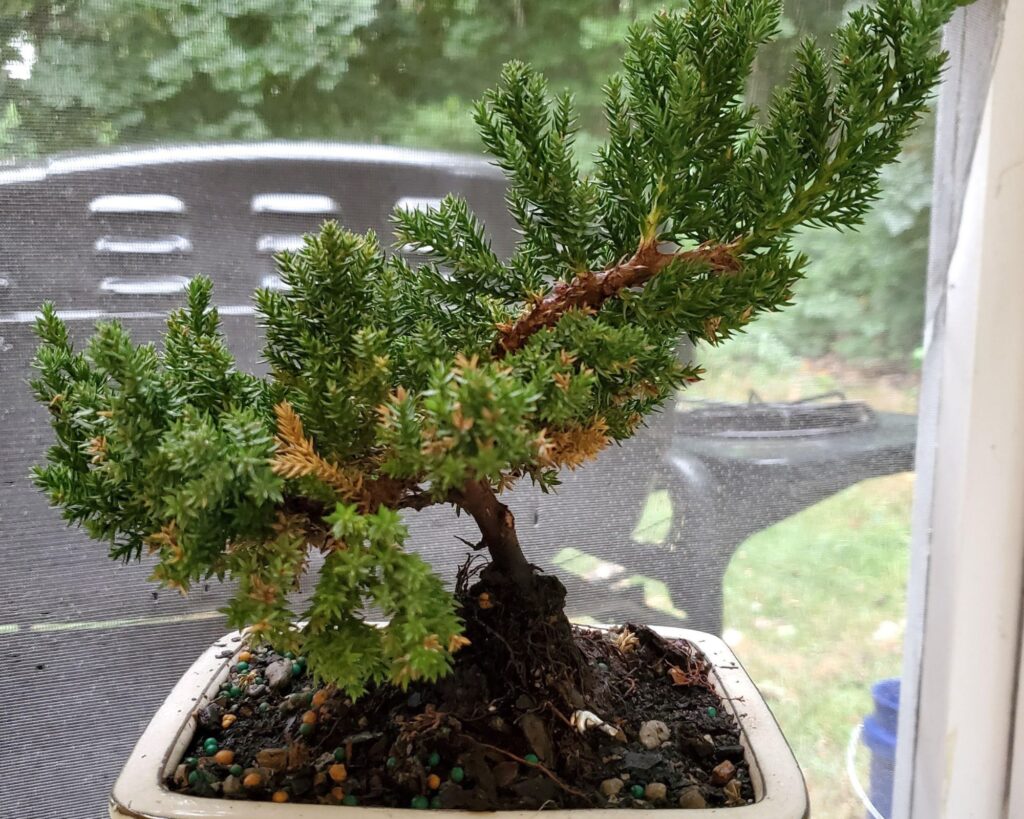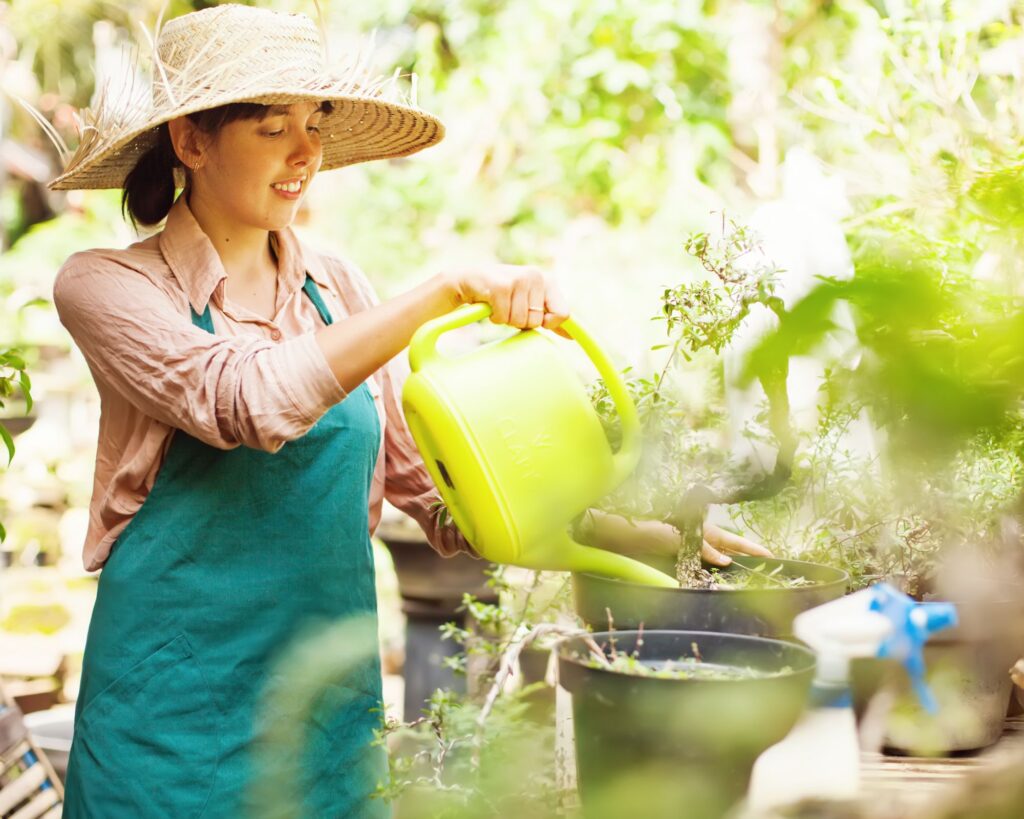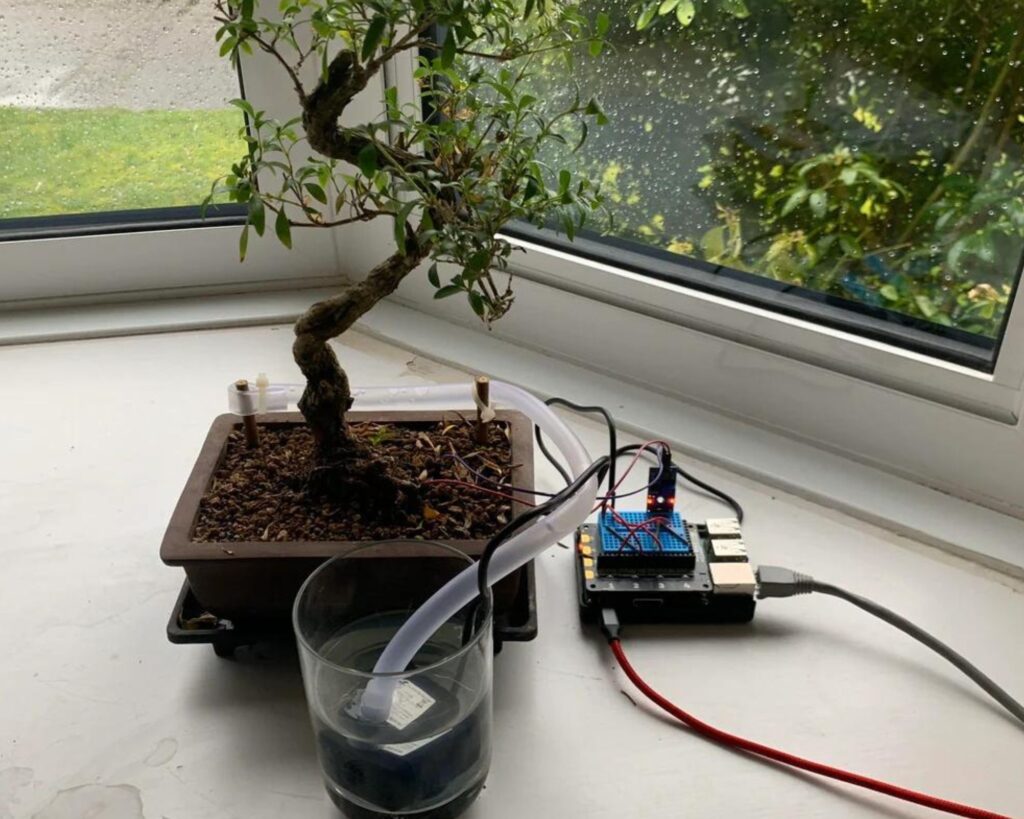Bonsai trees are miniature marvels of nature that transform any space into a serene oasis. Yet, these delicate wonders demand meticulous care, especially when it comes to watering.
Have you ever wondered if you’re nurturing your bonsai correctly, or if your well-intentioned efforts might be harming it? Join us as we dive into the art of bonsai watering, uncovering secrets and tips that will ensure your tree thrives.
Are you ready to become a bonsai watering expert? Let’s find out!
Understanding Bonsai Trees and Their Water Needs
Bonsai trees, despite their diminutive size, are not distinct species of trees. They are regular trees or shrubs trained and pruned to remain small while maintaining the characteristics of their full-sized counterparts. This unique cultivation method means that bonsai trees have the same water requirements as their larger relatives but are confined to a much smaller volume of soil, which can quickly become a challenging environment.
Factors Influencing Watering
Several factors affect how often and how much you should water your bonsai tree:
- Tree Species: Different species have varying water needs. For example, tropical and subtropical bonsai, like Ficus and Jade, generally require more frequent watering than temperate species like Juniper and Pine.
- Pot Size and Type: The size and type of the pot can impact the moisture retention of the soil. Smaller pots dry out faster, while certain materials, like unglazed ceramic, allow for better moisture regulation compared to plastic.
- Soil Composition: Bonsai soil mixes are designed to provide excellent drainage while retaining adequate moisture. The composition of your soil mix (e.g., Akadama, pumice, and lava rock) will influence how quickly the soil dries out.
- Climate and Environment: The ambient temperature, humidity, and air circulation in your environment play significant roles in the water requirements of your bonsai. Indoor bonsai might need different watering schedules compared to those kept outdoors.
- Season: Watering needs change with the seasons. During the growing season (spring and summer), your bonsai will likely require more frequent watering compared to the dormant period (fall and winter).
The Golden Rules of Bonsai Watering
Rule 1: Check the Soil Moisture
Before watering your bonsai, it is crucial to check the soil moisture. Insert a chopstick or your finger about an inch into the soil. If the soil feels dry at this depth, it is time to water. If it feels damp, wait a bit longer. This method ensures that you are not overwatering or underwatering your tree.
Rule 2: Water Thoroughly
When watering, do so thoroughly. Use a fine rose watering can or a hose attachment that mimics gentle rain. Water until you see water draining out of the bottom of the pot. This thorough watering helps to ensure that the entire root system gets adequately hydrated.
Rule 3: Allow for Drainage
Proper drainage is essential to prevent root rot. Make sure your bonsai pot has drainage holes and that they are not blocked. Good drainage allows excess water to escape and air to circulate around the roots.
Rule 4: Adjust for Environmental Changes
Be mindful of changes in your bonsai’s environment. If you move your bonsai from an indoor setting to outdoors, or if there is a significant shift in weather patterns, you will need to adjust your watering schedule accordingly. Increased heat and sunlight will require more frequent watering.
Common Watering Mistakes and How to Avoid Them
Overwatering
Overwatering is one of the most common mistakes made by bonsai enthusiasts. It can lead to root rot, a condition where the roots are deprived of oxygen and begin to decay. Symptoms of overwatering include yellowing leaves, soft and mushy roots, and a foul smell from the soil. To avoid overwatering, always check the soil moisture before watering and ensure your pot has adequate drainage.
Underwatering
On the other hand, underwatering can cause your bonsai to dry out and eventually die. Signs of underwatering include dry, brittle leaves, and a shriveled appearance. To prevent underwatering, make it a habit to check your bonsai regularly and water it thoroughly when the soil is dry.
Using Poor-Quality Water
The quality of water you use can significantly impact your bonsai’s health. Tap water often contains chlorine, fluoride, and other chemicals that can accumulate in the soil and harm your tree over time. Whenever possible, use rainwater, distilled water, or water that has been left to sit out for 24 hours to allow chemicals to dissipate.
Inconsistent Watering Schedule
Consistency is key in bonsai watering. Establish a regular routine that takes into account the specific needs of your tree species, the environment, and the season. Inconsistent watering can stress your bonsai and lead to health issues.
Seasonal Watering Tips
Spring and Summer
During the growing season, your bonsai will be more active and require more water. Check the soil moisture daily and water when needed. Pay extra attention to bonsai kept outdoors as they can dry out quickly in the heat. Morning is the best time to water, as it allows the soil to absorb the moisture before the heat of the day.
Fall
As temperatures begin to drop in the fall, your bonsai’s water needs will decrease. Continue to check the soil moisture regularly but be prepared to reduce the frequency of watering. Ensure your bonsai is not sitting in waterlogged soil, as this can lead to root rot.
Winter
During the dormant winter months, your bonsai will need very little water. For indoor bonsai, water sparingly, just enough to keep the soil from completely drying out. Outdoor bonsai in cold climates may require protection from freezing temperatures, but still, need occasional watering to prevent the roots from drying out.
Advanced Watering Techniques
Misting
Misting can be beneficial for tropical and subtropical bonsai species that thrive in higher humidity. Use a spray bottle to mist the leaves in the morning, mimicking the natural dew they would receive in their native habitats. Be careful not to over-mist, as excessive moisture on the leaves can lead to fungal issues.
Bottom Watering
Bottom watering involves placing the bonsai pot in a shallow tray of water and allowing the soil to absorb the water through the drainage holes. This method can be particularly useful for species with fine, delicate roots. After the soil is adequately moistened, remove the pot from the tray to prevent waterlogging.
Automatic Watering Systems
For bonsai enthusiasts with busy schedules, automatic watering systems can be a lifesaver. These systems can be programmed to water your bonsai at specific intervals, ensuring consistent hydration. However, they should be used with caution and regular monitoring to avoid overwatering.
Watering bonsai trees correctly is an art and science that requires careful attention to detail and an understanding of your tree’s unique needs. By following the golden rules of bonsai watering, avoiding common mistakes, and adjusting your routine based on seasonal changes and environmental factors, you can ensure your bonsai thrives and remains a beautiful, healthy miniature tree.
Remember, the key to successful bonsai watering is observation and adaptation. Regularly check the soil moisture, water thoroughly but not excessively, and be mindful of your bonsai’s environment. With practice and patience, you will develop the skills needed to master the art of bonsai watering, ensuring your trees flourish for years to come.

